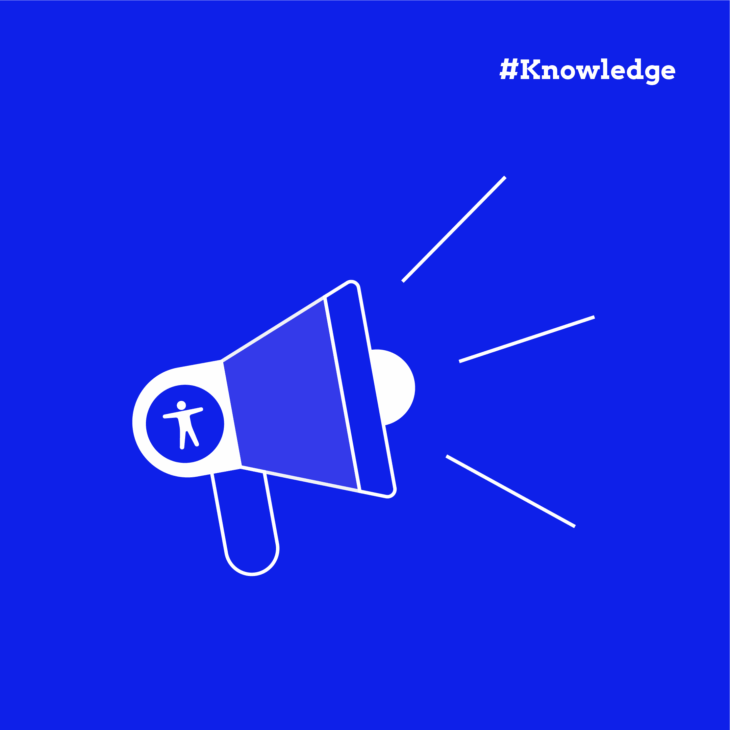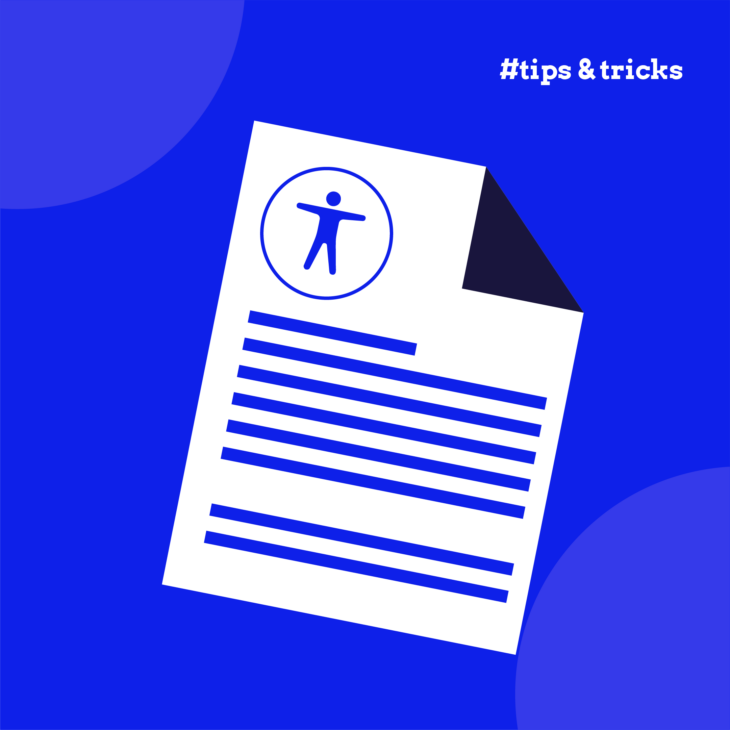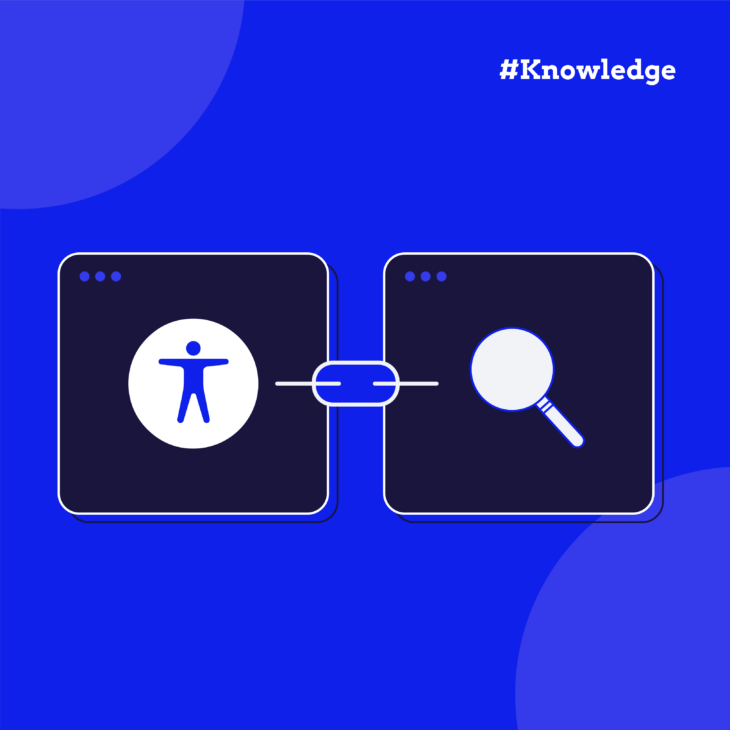Accessible marketing creates content and campaigns that everyone can use and enjoy effectively, including people with disabilities. However, the mistake many professionals make is that they treat accessibility as a checkbox exercise, rather than something that blends into their marketing strategy. Doing the latter takes effort, including examining every customer touchpoint – from websites and emails to social media posts – to ensure they’re inclusive by design.
Still, just because it takes effort, doesn’t mean you shouldn’t do it or that it’s a very hard thing to do. Making marketing accessible involves practical techniques like using clear language, adding alternative text to images, ensuring sufficient colour contrast, captioning videos, and creating interfaces that work seamlessly with assistive technologies.
And these practices aren’t just beneficial for users with disabilities – they improve the experience for everyone.
In this guide, you’ll discover specific, actionable strategies for implementing accessibility across your marketing channels. You’ll learn concrete methods to make your materials accessible while simultaneously improving compliance and expanding your audience reach.
The benefits of accessibility in marketing
Accessible marketing removes obstacles for people with a range of impairments – visual, hearing, motor, and cognitive. These adaptations make your content available to everyone, regardless of how they interact with your digital presence.
Did you know? One in five UK consumers has some form of disability, with a combined spending power of £274 billion annually.
When you prioritise accessibility, two important things happen: you help users and your business at the same time!
Accessible marketing transforms the user experience by enabling:
- Independent brand engagement without requiring assistance from others.
- Equal access to your promotions, product details, and support channels.
The business case for accessibility is also compelling:
| Business benefit | Impact |
|---|---|
| Expanded reach | Access the 20% of consumers with disabilities. |
| Better SEO | NPR saw 6.86% search traffic growth after adding transcripts. |
| Higher engagement | More users can interact successfully with your content. |
| Lower bounce rates | Users stay longer when they can navigate comfortably. |
| Market differentiation | Stand out from competitors who ignore accessibility. |
Making your marketing accessible isn’t just the right thing to do – it’s smart business practice.
Want to learn more about specific disabilities? Check out our guide on the different disability types!
The risks of inaccessibility
Accessibility is increasingly required by law. Countries worldwide have established different legal frameworks to protect digital rights for people with disabilities:
- The Web Content Accessibility Guidelines (WCAG) serve as the global technical standard, with compliance levels ranging from A (minimum) to AAA (highest).
- In the UK, the Equality Act 2010 requires organisations to make reasonable adjustments for people with disabilities, including accessible digital experiences.
- The European Accessibility Act (EAA) enforces accessibility requirements across EU member states.
- In the US, the Americans with Disabilities Act (ADA) has been interpreted to apply to websites, leading to thousands of lawsuits annually.
The consequences of non-compliance are significant:
- Legal action – Direct costs from settlements and legal fees.
- Brand damage – Public perception issues when accessibility failures become public.
- Lost revenue – Exclusion of potential customers with disabilities.
How to create accessible marketing content across multiple channels
Each marketing channel requires specific accessibility approaches that balance brand guidelines with inclusive design. By implementing channel-appropriate techniques, you’ll reach wider audiences, improve user experience, and maintain compliance with accessibility standards.
Website
Your website is your marketing hub, where accessibility directly impacts conversion rates and brand perception:
- Structure with proper heading hierarchy (H1-H6) to maintain both SEO benefits and screen reader navigation. This creates a logical content outline that helps all users follow your marketing message.
- Craft descriptive alt text that serves both accessibility and marketing purposes – describing images while including relevant keywords when appropriate. Remember: alt text should consist of functional description and not keyword stuffing.
- Design with sufficient colour contrast (4.5:1 ratio minimum) between text and background while maintaining brand identity. Tools like the WebAIM Contrast Checker can verify that your design meets requirements.
- Create accessible forms that capture leads without creating barriers – all fields should have visible labels, clear error messages, and logical tab order. This reduces abandonment rates for everyone.
- Make interactive elements accessible by ensuring promotional carousels, testimonial sliders, and popups can be navigated with keyboard controls and include appropriate ARIA labels for screen readers.
Curious what else makes a website accessible? Check out our article on achieving comprehensive website accessibility!
Email and newsletter
Email marketing requires precise accessibility implementation to ensure campaigns reach all subscribers effectively. Your messages compete in crowded inboxes – making them accessible expands your reach while improving engagement metrics.
- Craft strategic subject lines that work effectively with screen readers while maintaining strong open rates. Keep them under 50 characters, with the most important information at the beginning.
- Build responsive templates that maintain readability when zoomed up to 200%. Test your layout at multiple zoom levels to ensure content doesn’t break or require horizontal scrolling.
- Structure logical navigation paths through your content with proper heading hierarchy (H1, H2, H3) and a consistent tab order that guides keyboard users naturally to your CTAs.
- Write action-oriented link text that makes sense out of context: replace generic “Click here” with specific “Shop our holiday collection” or “Register for the webinar now.”
- Keep critical information accessible by never embedding important content like promotional codes or CTAs solely within images – screen reader users will miss this completely.
For maximum inclusivity, always provide plain-text alternatives alongside HTML versions – many users with visual impairments prefer or require this simpler format.
Social media
Social media marketing presents unique accessibility challenges with each platform’s constraints. Before diving into platform specifics, let’s cover the accessibility practices that apply across all social networks.
Universal accessibility tips for all platforms
Some accessibility considerations remain consistent regardless of which platform you’re using:
- Avoid fake bold and italic text generators that use Unicode math symbols to create styled text. These tools might seem handy for making your posts stand out, but they create serious accessibility issues. Screen readers either announce each letter individually, skip the styling entirely, or display confusing code points on Braille displays. Your carefully crafted marketing message becomes incomprehensible noise. Read more about why fake styling fails.
- Use camel case for hashtags (#AccessibleMarketing instead of #accessiblemarketing). This simple change helps screen readers pronounce hashtags as separate words rather than a jumbled string of letters. Your campaign hashtags become instantly more understandable.
- Place hashtags and mentions at the end of your posts when possible. Leading with your core message ensures screen reader users hear your marketing content first, without interruption from “hashtag” and “at mention” announcements.
- Write descriptive link text instead of “click here” or bare URLs. “Shop our summer collection” tells everyone exactly where that link leads, making your CTAs more effective for all users.
- Limit emoji use and always include them after your text, not as replacements for words. Three celebration emojis might look festive, but hearing “party popper, party popper, party popper” gets tedious quickly.
Now let’s look at platform-specific considerations:
Facebook offers relatively good accessibility features, but they require proper implementation to be effective for your marketing campaigns:
- Create custom alt text for all images instead of relying on Facebook’s auto-generated descriptions, which may overlook crucial marketing context. When uploading campaign visuals, click the “Edit Photo” option and select “Alternative Text” to add descriptions that capture both the visual elements and your marketing message.
- Ensure video content includes captions by uploading SRT files or using Facebook’s auto-caption feature. Always review and edit auto-generated captions before publishing – they may misinterpret industry terms and product names that are essential to your marketing message.
- Structure Facebook Live streams for accessibility by verbally describing visual elements as they happen. If you’re demonstrating a product, narrate what you’re doing: “I’m now applying the moisturiser in upward strokes on my cheek” rather than silently demonstrating. Pin a comment with key information at the start of your live session so viewers joining late can catch up.
Instagram requires specific techniques to maintain both visual appeal and accessibility:
- Add custom alt text through “Advanced Settings” when creating posts to provide context that serves both accessibility and marketing purposes. For existing content, edit posts by tapping the three dots and selecting “Edit Alt Text” to add descriptions that convey both visual elements and your call to action.
- Use caption stickers for Stories and Reels to automatically transcribe speech. Always review these transcriptions before publishing, as they often need editing for accuracy, especially with branded terms or promotional offers that auto-transcription might misinterpret.
- Optimise visual elements for accessibility by using Instagram’s text features with high-contrast colours (aim for at least 4.5:1 ratio) and limiting animated GIFs that could trigger photosensitivity issues. When creating carousel posts, include text summaries on each slide rather than relying solely on the caption – not everyone reads captions, and some third-party apps don’t display them prominently. Ensure interactive elements like polls and question boxes have sufficient tap targets (at least 44×44 pixels) for users with motor limitations.
X (formerly Twitter)
Create accessible marketing campaigns on X (formerly Twitter) within character constraints while maintaining engagement:
- Structure messages for screen reader compatibility by placing hashtags and mentions at the end of your tweets. This ensures your core marketing message comes first when screen readers announce content, rather than being interrupted by “@mentions” and “hashtag” announcements that can disrupt comprehension.
- Implement clear numbering for thread campaigns (1/5, 2/5) to help all users follow your marketing narrative logically. This simple system creates a clear path through your content for everyone, especially beneficial for screen reader users who might access your content non-sequentially.
- Time your posts strategically considering accessibility needs. Avoid posting rapid-fire updates during product launches – space them at least 30 minutes apart to prevent overwhelming users who have notifications enabled with screen readers. Each notification interrupts their workflow, so consolidated updates work better than a stream of single tweets.
YouTube
- Implement accurate closed captions for all marketing videos by uploading SRT files through YouTube Studio → Subtitles → Add Language. While YouTube‘s auto-captions have improved, they still struggle with brand names, technical terms, and marketing slogans. Review and edit every auto-generated caption – your “boutique hotel” might become “bootie hotel”, drastically altering your brand message. Captions also get indexed by search engines, improving discoverability.
- Craft comprehensive video descriptions using YouTube’s 5,000-character limit strategically. Structure them with your marketing message and links first (visible above the “Show More” fold), followed by timestamps for easy navigation, then a full transcript. For a product demo video, include: executive summary, clickable timestamps (“0:23 – Unboxing experience”, “1:45 – Key features demonstration”), relevant links, and complete transcript. This helps screen reader users and boosts SEO.
- Design accessible thumbnails and end screens with clear text overlays using YouTube’s built-in tools. Ensure text on thumbnails is large enough to read on mobile devices – at least 1/16th of the thumbnail height. For end screens, position elements to avoid obscuring crucial content and extend display time to at least 7 seconds, giving users with motor disabilities adequate time to interact.
TikTok
- Optimise auto-captions for marketing clarity by activating TikTok‘s auto-caption feature when uploading, then editing for accuracy before publishing. Position these captions strategically to avoid obscuring product displays, demonstrations, or other crucial visual marketing elements.
- Leverage text-to-speech for promotional content by applying TikTok’s built-in feature to provide auditory alternatives to on-screen promotional text. This ensures visually impaired users receive your marketing messages clearly, improving campaign reach beyond visual-only users.
- Incorporate descriptive voice-overs that narrate key visual actions in your product demonstrations or brand storytelling. Record these using TikTok’s standard recording capabilities to create content that works seamlessly for both sighted and non-sighted audiences without requiring separate versions.
Essential accessibility best practices for marketing
No one should treat marketing accessibility as a simple checkbox. Think of it as a strategic advantage that connects your brand with the entire potential audience. Here’s what we recommend:
Integrate, don’t separate
Build accessibility checkpoints directly into your existing marketing workflow rather than treating it as a separate process. Include accessibility criteria in content briefs, design reviews, and final approvals to prevent last-minute fixes that compromise your messaging.
Create focused guidelines
Develop simplified WCAG guidelines tailored specifically to your marketing team’s daily needs. Focus only on requirements relevant to your most common content types – no need for developers to understand video captions, or content writers to understand ARIA attributes.
Implement effective testing
Use a strategic combination of testing approaches:
- Automated tools like WAVE for quick website structure checks.
- Colour contrast analysers for visual elements.
- Screen readers to experience email campaigns as visually impaired users would.
Want to learn how to test like a pro? Check out our full guide on accessibility testing.
Validate with real users
Nothing replaces direct feedback from people with disabilities. Their insights identify critical issues automated tools miss, particularly around usability and conversion path friction points.
Establish audit schedules
Create regular accessibility audit cycles for marketing assets, prioritising high-traffic landing pages and conversion funnels. Document improvements to track progress and demonstrate ROI.
Invest in specialised training
The primary reason for accessibility failures? Lack of knowledge. Equip your team with training specifically designed for marketers, focusing on practical implementation rather than theoretical standards.
Transform your marketing with The A11Y Collective
At The A11Y Collective, we strongly believe that effective accessibility starts with creating content that’s clear, navigable, and inclusive. When your marketing messages are truly accessible, they naturally resonate with diverse audiences without excluding potential customers, expanding your reach while strengthening your brand.
Our “Writing accessible content for the web” course delivers exactly what marketers need to implement accessibility principles that drive real results. This specialised training transforms accessibility from a compliance checkbox into a strategic advantage.
The ROI is clear and measurable:
- Expanded market reach to 1 in 5 consumers with disabilities.
- Improved organic search performance through better-structured content.
- Protection against potential legal challenges in an increasingly regulated landscape.
Mirela PascuThe course helped me to better understand the needs that all of us have when we visit a website. Now I create content that works for everyone.
Stop creating marketing materials that unintentionally exclude potential customers. Start building inclusive campaigns that perform better across all metrics, and sign up for “Writing accessible content for the web”.

Ready to create content that reaches everyone?
Learn to expand your reach, improve SEO, and turn accessibility into a competitive advantage.




